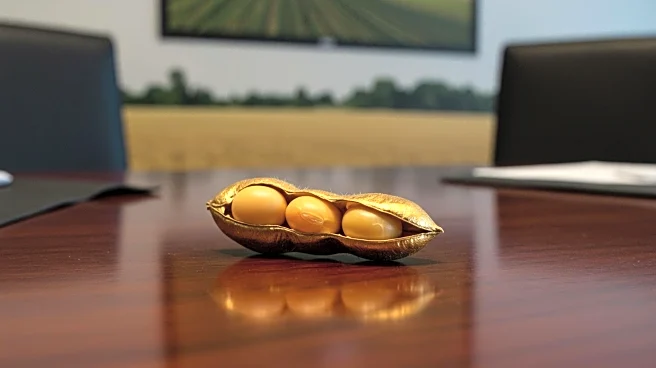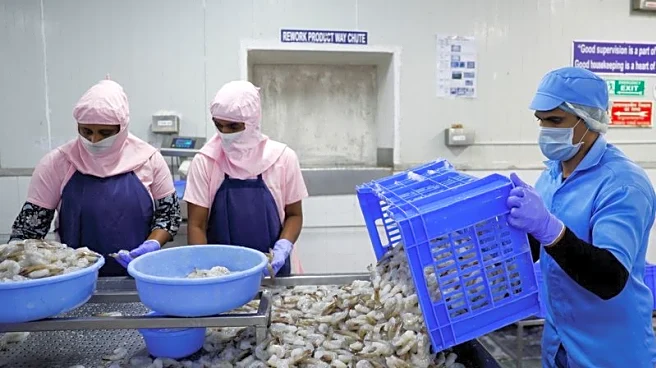Rapid Read • 8 min read
The U.S. agricultural trade deficit has reached a record $28.6 billion through June 2025, according to data from the USDA. This marks a significant increase from the previous year's deficit of $18.4 billion during the same period. The widening gap is attributed to weak production growth, increased demand for imported food, and ongoing trade conflicts. President Trump's reciprocal tariffs, announced in April, have further impacted trade dynamics, particularly with China. The trade war has halved U.S. exports to China, with agricultural exports to China at their lowest since 2010. The deficit is driven by strong U.S. demand for high-value, consumer-ready products, many of which are not widely produced domestically, while U.S. exports largely consist of lower-value bulk commodities.
AD
The growing agricultural trade deficit has significant implications for U.S. industries and economic stakeholders. The deficit reflects challenges in maintaining global competitiveness due to a strong U.S. dollar and high labor costs, which make American goods more expensive for foreign buyers. Additionally, trade barriers and retaliatory tariffs have limited access to key markets, affecting U.S. export potential. The deficit impacts domestic producers who face competition from imports, although some imports complement domestic production. The situation underscores the need for strategic trade policies to balance import reliance with export growth, ensuring the sustainability of U.S. agriculture in the global market.
The USDA forecasts that the agricultural trade deficit will rise to approximately $49.5 billion by the end of fiscal year 2025, marking the largest imbalance on record. The next quarterly trade outlook is scheduled for release on August 28, which may provide further insights into trade dynamics and potential policy adjustments. Continued negotiations and trade discussions, particularly with China, are crucial in addressing the deficit and improving export opportunities. Stakeholders, including policymakers and industry leaders, will need to consider measures to enhance competitiveness and mitigate the impacts of tariffs and trade barriers.
The agricultural trade deficit highlights broader economic and policy challenges, including the need for diversification in domestic production and innovation in agricultural practices. Ethical considerations arise regarding the balance between protecting domestic industries and engaging in fair trade practices. Long-term shifts may include increased focus on sustainable agriculture and investment in technologies to boost production efficiency and reduce import dependency.
AD
More Stories You Might Enjoy











